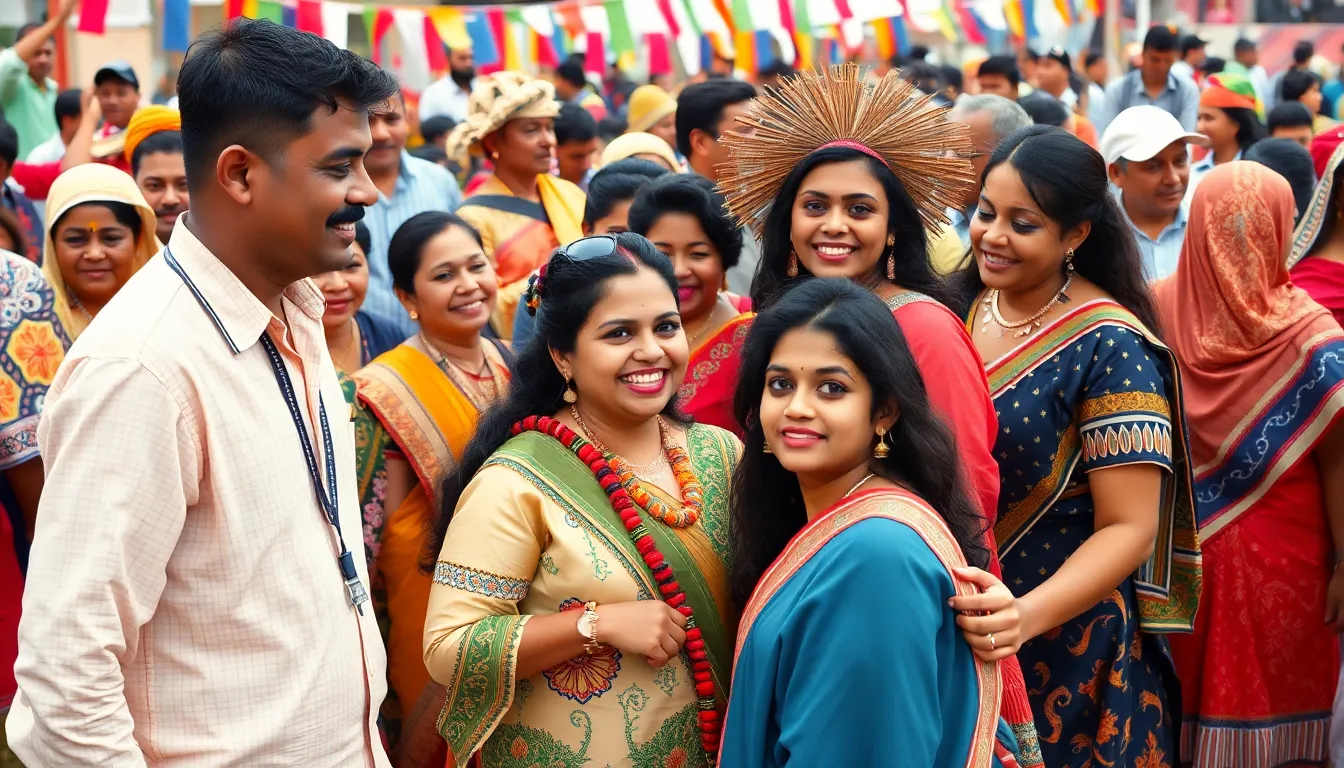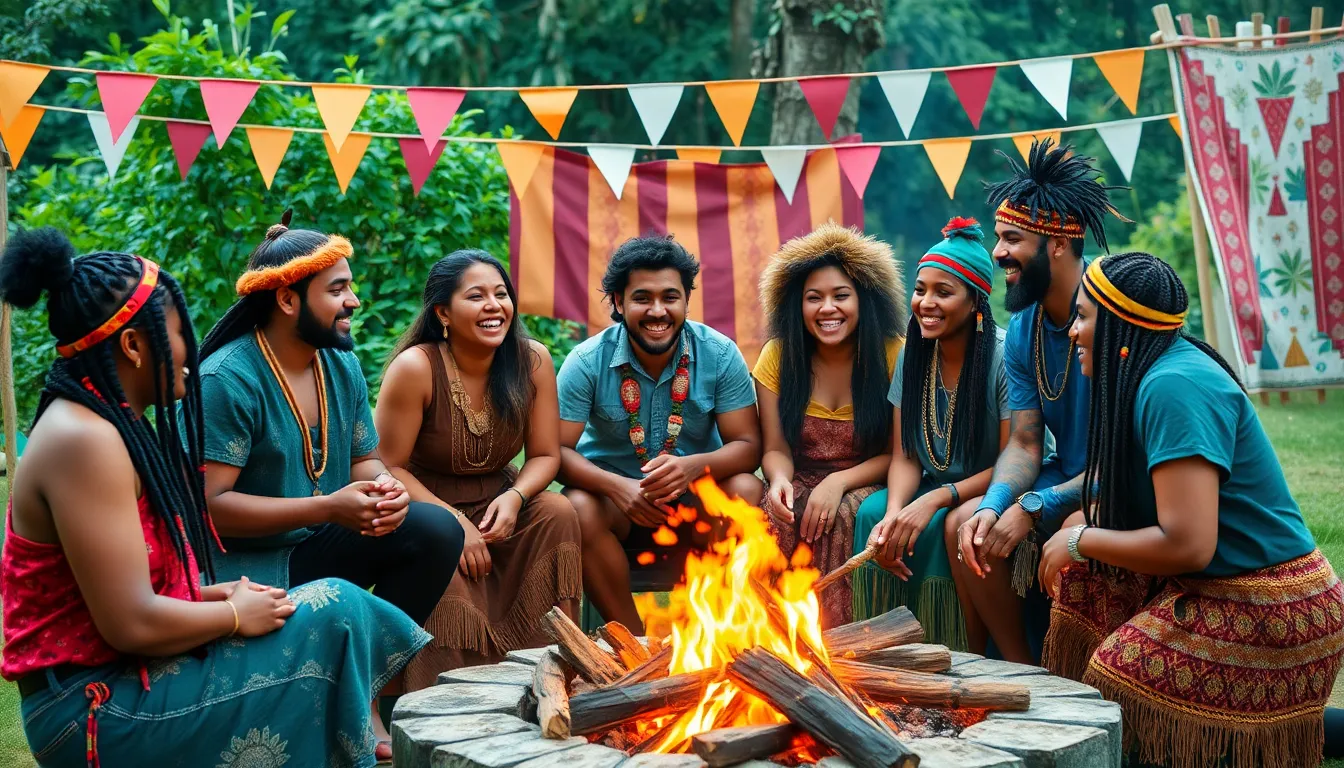In a world bustling with connections and digital interactions, the concept of a “tribe” takes on a whole new meaning. It’s not just about gathering around a campfire anymore; it’s about finding your people in the vast wilderness of life. Whether it’s your book club, gaming squad, or that quirky group of friends who share your obsession with collecting vintage spoons, tribes give us a sense of belonging that’s hard to beat.
But what makes a tribe truly special? It’s the laughter, the shared experiences, and the inside jokes that only those in the circle understand. In this article, we’ll dive into the essence of tribes, exploring why they matter and how they shape our identities. Get ready to discover how the right tribe can turn life’s challenges into adventures and transform ordinary moments into extraordinary memories.
Table of Contents
ToggleDefinition of Tribe
A tribe represents a community formed by individuals sharing common interests, values, or goals. Unique characteristics define these groups, including shared experiences, cultural practices, and social connections. Tribes often emerge around specific hobbies, ideologies, or life stages, illustrating the diverse ways people connect.
In contemporary society, tribes take on new forms, often facilitated by digital platforms. Online communities now host tribes that transcend geographic boundaries. Different tribes may express their identity through social media interactions, support networks, or collaborative projects.
Essentially, the concept of a tribe embodies the essence of belonging, providing individuals with a sense of identity and community. Outside of the digital realm, tribes gather through local events, clubs, or organizations. Various tribes also extend beyond personal connections, impacting wider social movements and cultural shifts.
Tribe dynamics depend on participation and engagement, where shared laughter and collective memories strengthen bonds. Authentic connections often foster a supportive environment, promoting personal growth and resilience among members. Such interactions elevate everyday life, transforming mundane experiences into significant moments.
Ultimately, tribes exist to provide comfort, support, and camaraderie, enriching lives through shared journeys and challenges. Recognizing the importance of these groups within the framework of human relationships reveals their crucial role in shaping identities and experiences. By participating in a tribe, individuals find companionship, inspiration, and motivation to navigate life’s complexities.
Importance of Tribes in Society

Tribes play a crucial role in shaping societal dynamics and individual identities. Their influence extends well beyond mere camaraderie, fostering cultural connections and social structures.
Cultural Significance
Tribes embody shared values and traditions, acting as carriers of cultural heritage. These groups contribute to cultural diversity by preserving unique practices and promoting creativity through collaboration. Individuals often find a sense of unity in their tribes, fostering deeper connections to their roots. Participating in cultural events and rituals enhances group identity and strengthens bonds among members. Ultimately, the significance of tribes lies in their ability to nurture cultural pride and facilitate the exchange of ideas.
Social Structure
Tribes form essential social networks that provide support and connection. Members benefit from a shared understanding of norms and values, establishing a framework for interaction. Connections in tribes often lead to increased trust and collaboration, creating an environment conducive to personal and collective growth. Engagement in these groups fosters relationships that can evolve into lifelong friendships. Recognition of social structures within tribes illuminates their role in fostering resilience and enhancing overall well-being in society.
Types of Tribes
Tribes manifest in various forms, reflecting diverse cultural, social, and modern influences. Key types include Indigenous tribes and modern tribes.
Indigenous Tribes
Indigenous tribes represent the original inhabitants of specific regions, maintaining unique customs and traditions. These groups often embody rich histories passed down through generations. Culture plays a central role in their identity, as customs, languages, and spiritual beliefs shape daily life. Examples include the Navajo and the Maasai, who celebrate distinct practices. These tribes also prioritize environmental stewardship and connection to ancestral lands. Their communities often focus on solidarity, resilience, and the preservation of heritage in a rapidly changing world.
Modern Tribes
Modern tribes arise from shared interests and values in contemporary society. These groups frequently form through social media platforms, sports teams, and hobbies. They enable connection among individuals worldwide, transcending geographical limitations. Examples of modern tribes include online gaming communities and fitness groups. Members usually share experiences, support one another, and foster relationships through common passions. Innovation and creativity often thrive within these tribes, driving cultural trends and collective action. Each tribe adapts to the evolving digital landscape while maintaining a strong sense of identity and belonging.
Challenges Faced by Tribes
Tribes face numerous challenges that affect their cohesion and cultural integrity. One significant challenge is cultural erosion.
Cultural Erosion
Cultural erosion threatens the identities of tribes as traditional practices fade. Increased globalization and technological advancement often dilute unique customs. Modern media exposure leads to the adoption of external values, overshadowing indigenous beliefs. Many younger tribe members may take on dominant cultural influences instead of embracing their roots. Preservation of traditional languages becomes difficult in this climate of change. Continuous disconnection from ancestral practices leads to a loss of heritage. The risk of cultural homogenization looms large, impacting the authenticity of tribes globally. Sustaining cultural practices requires intentional efforts to foster intergenerational transmission of knowledge.
Economic Issues
Economic issues present another hurdle for tribes. Limited access to resources restricts opportunities for job creation and financial stability. Many tribes struggle with inadequate infrastructure to support local economies. Dependence on external funding sources can lead to vulnerability and instability. Natural resource exploitation often disrupts traditional lifestyles, resulting in conflict over land use. Disparities in economic development can exacerbate inequality among tribe members. Collaboration with outside organizations sometimes becomes necessary to address financial challenges. Sustainable strategies must focus on empowering tribal enterprises to enhance economic resilience.
The Future of Tribes
Tribes are evolving as society continues to change. Individuals now find ways to connect through technology, enabling them to engage in unique practices. Digital platforms facilitate communication and foster communities that transcend geography.
Local events remain vital, as they bring members together, enhancing relationships and shared experiences. Participants gain a sense of belonging, which strengthens their identity. Each interaction supports personal growth while cultivating resilience within the group.
Cultural preservation plays a crucial role in the future of tribes. As globalization continues, tribes must adapt while safeguarding their heritage. This balance between innovation and tradition becomes essential for legacy and identity.
Economic empowerment is another focus point. Sustainable strategies can help tribes thrive, promoting entrepreneurship and job creation. By addressing resource limitations, tribes strengthen their foundations and promote stability.
Indigenous tribes face a unique set of challenges in this landscape. Their heritage requires heightened awareness and advocacy to prevent erosion of traditional practices. Collaboration with external organizations can enhance their visibility and support.
Modern tribes benefit from the increased access to global networks. They can share their interests and passions, creating a vibrant cultural exchange. This interaction further enriches societal dynamics and drives innovation.
Supportive environments are crucial for fostering creativity. As tribes navigate complexities, mentorship and collaboration become key elements. Enhanced support networks cultivate lifelong connections and nurture individual journeys.
The future of tribes hinges on collective action. Leaders within communities must prioritize engagement and inclusivity. These efforts ensure tribes remain vibrant, relevant, and impactful in an ever-changing world.
Tribes play an essential role in shaping individual identities and fostering connections in today’s fast-paced world. They provide a sense of belonging and community that transcends geographical boundaries. As society evolves, both Indigenous and modern tribes face unique challenges but also opportunities for growth and resilience.
The future of tribes hinges on their ability to adapt while preserving cultural heritage and promoting economic empowerment. By nurturing authentic connections and supporting one another, tribes can continue to thrive and enrich lives. Embracing the spirit of collaboration and mentorship will ensure that these vital communities remain impactful and relevant in an ever-changing landscape.




